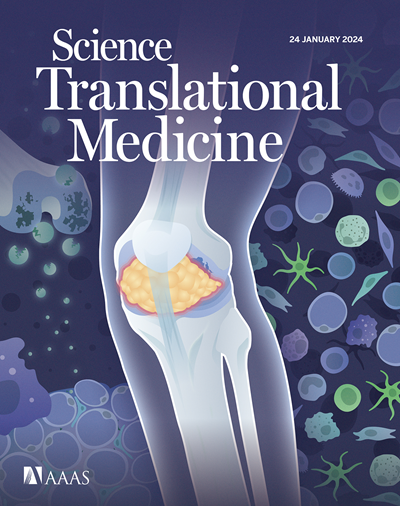Prior vaccination prevents overactivation of innate immune responses during COVID-19 breakthrough infection
IF 15.8
1区 医学
Q1 CELL BIOLOGY
引用次数: 0
Abstract
At this stage in the COVID-19 pandemic, most infections are “breakthrough” infections that occur in individuals with prior severe acute respiratory syndrome coronavirus 2 (SARS-CoV-2) exposure. To refine long-term vaccine strategies against emerging variants, we examined both innate and adaptive immunity in breakthrough infections. We performed single-cell transcriptomic, proteomic, and functional profiling of primary and breakthrough infections to compare immune responses from unvaccinated and vaccinated individuals during the SARS-CoV-2 Delta wave. Breakthrough infections were characterized by a less activated transcriptomic profile in monocytes and natural killer cells, with induction of pathways limiting monocyte migratory potential and natural killer cell proliferation. Furthermore, we observed a female-specific increase in transcriptomic and proteomic activation of multiple innate immune cell subsets during breakthrough infections. These insights suggest that prior SARS-CoV-2 vaccination prevents overactivation of innate immune responses during breakthrough infections with discernible sex-specific patterns and underscore the potential of harnessing vaccines in mitigating pathologic immune responses resulting from overactivation.
求助全文
约1分钟内获得全文
求助全文
来源期刊

Science Translational Medicine
CELL BIOLOGY-MEDICINE, RESEARCH & EXPERIMENTAL
CiteScore
26.70
自引率
1.20%
发文量
309
审稿时长
1.7 months
期刊介绍:
Science Translational Medicine is an online journal that focuses on publishing research at the intersection of science, engineering, and medicine. The goal of the journal is to promote human health by providing a platform for researchers from various disciplines to communicate their latest advancements in biomedical, translational, and clinical research.
The journal aims to address the slow translation of scientific knowledge into effective treatments and health measures. It publishes articles that fill the knowledge gaps between preclinical research and medical applications, with a focus on accelerating the translation of knowledge into new ways of preventing, diagnosing, and treating human diseases.
The scope of Science Translational Medicine includes various areas such as cardiovascular disease, immunology/vaccines, metabolism/diabetes/obesity, neuroscience/neurology/psychiatry, cancer, infectious diseases, policy, behavior, bioengineering, chemical genomics/drug discovery, imaging, applied physical sciences, medical nanotechnology, drug delivery, biomarkers, gene therapy/regenerative medicine, toxicology and pharmacokinetics, data mining, cell culture, animal and human studies, medical informatics, and other interdisciplinary approaches to medicine.
The target audience of the journal includes researchers and management in academia, government, and the biotechnology and pharmaceutical industries. It is also relevant to physician scientists, regulators, policy makers, investors, business developers, and funding agencies.
 求助内容:
求助内容: 应助结果提醒方式:
应助结果提醒方式:


